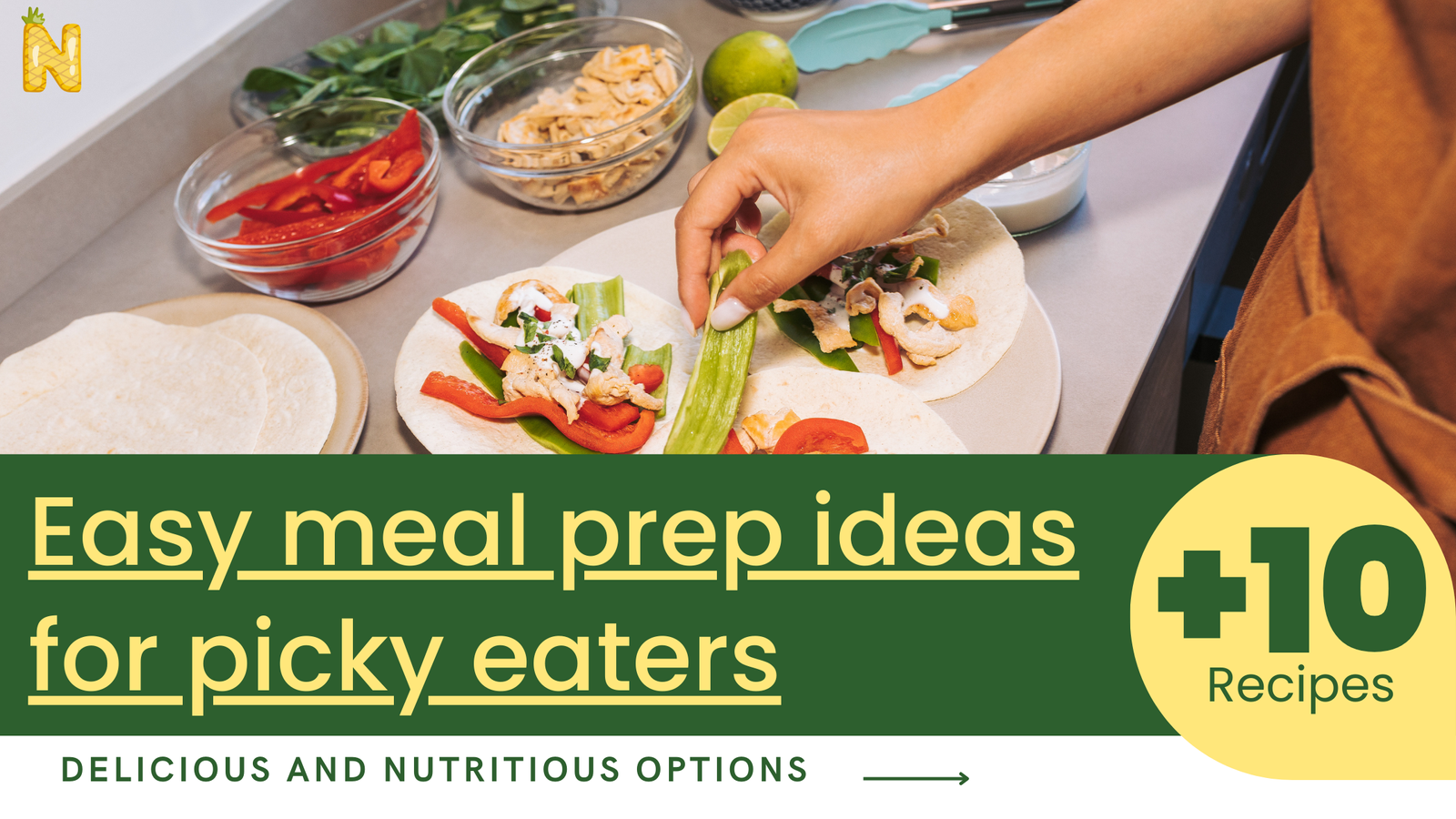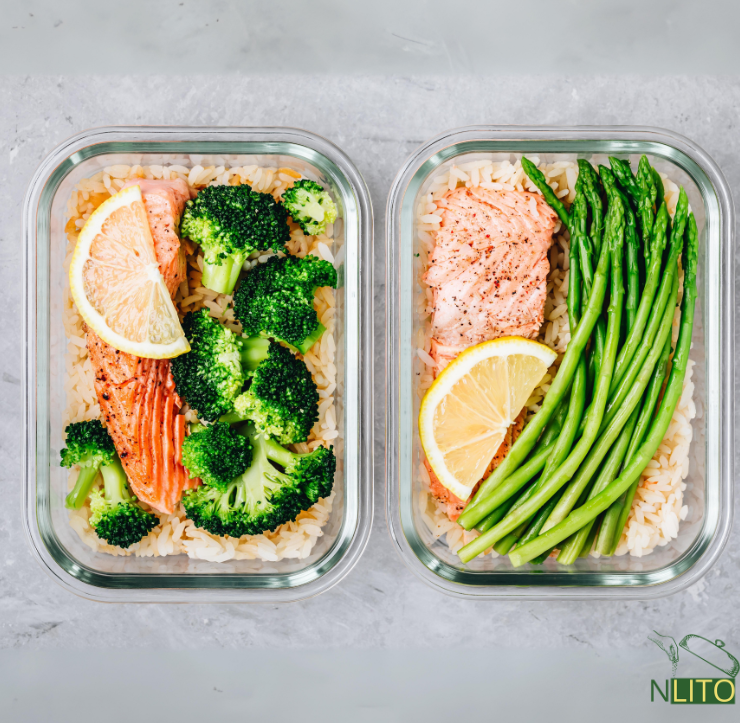Healthy Meal Prep Ideas for Picky Eaters
Introduction
Preparing healthy meals can be a challenge, especially when you’re dealing with picky eaters. Whether it’s a strong dislike for certain vegetables or a refusal to try anything new, meal prepping for picky eaters requires creativity and patience. However, maintaining a balanced diet is crucial for overall health, and it’s entirely possible to create meals that are both nutritious and appealing to even the pickiest of eaters. In this blog, we’ll explore various strategies, tips, and meal ideas that can help you overcome the challenges of meal prepping for picky eaters.
Understanding the Picky Eater
Common Characteristics of Picky Eaters
Picky eaters often display a range of behaviors that can make mealtime a struggle. They may have strong food aversions, limiting their diet to a narrow selection of foods. Texture, color, and even the appearance of food can trigger refusal. Understanding these characteristics is the first step in addressing the issue, as it allows you to tailor meal prep strategies to meet their specific needs.
Nutritional Concerns
One of the primary concerns with picky eaters is the potential for nutrient deficiencies. When a child’s diet is limited, they may miss out on essential vitamins and minerals needed for growth and development. This makes it important to ensure that the foods they do eat are as nutrient-dense as possible. Incorporating a variety of foods in creative ways can help bridge the nutritional gaps.
Strategies for Successful Meal Prep
Involving Picky Eaters in the Planning
One effective strategy for dealing with picky eaters is to involve them in the meal planning process. When children have a say in what they eat, they’re more likely to try new foods. Take them grocery shopping and let them choose fruits, vegetables, or other ingredients they’d like to try. This involvement can make them feel more connected to their meals, reducing resistance at the table.
Sneaking in Nutrients
Another tactic is to sneak nutrients into meals without changing the flavor or appearance too much. Blending vegetables into sauces or soups is a great way to add vitamins and minerals without being detected. Purees and finely chopped vegetables can be hidden in dishes like pasta, casseroles, or even baked goods, ensuring that picky eaters get the nutrients they need without realizing it.
Making Healthy Swaps
Making small, healthy swaps can also help improve the nutritional value of meals without drastically changing their taste. For example, you can use whole-grain bread instead of white, Greek yogurt instead of sour cream, or mashed avocado instead of butter. These swaps add more nutrients to the meal while maintaining flavors that picky eaters are familiar with.
Easy and Healthy Meal Prep Recipes
Breakfast Ideas
Starting the day with a nutritious breakfast is essential, especially for picky eaters. Smoothie packs are a fantastic option that can be prepared in advance. You can blend a variety of fruits with a handful of spinach or other mild-tasting vegetables to create a nutrient-rich smoothie that’s still sweet and appealing. Healthy muffins made with oats, fruits, and a touch of honey are another great breakfast choice. These can be baked in bulk and frozen, providing a quick and healthy option for busy mornings.
Lunch Ideas
Lunches for picky eaters can be both fun and nutritious. DIY bento boxes allow for creativity and customization, which can appeal to selective eaters. Include a mix of their favorite snacks, such as cheese cubes, whole-grain crackers, fruit slices, and a small portion of vegetables with a dipping sauce. Wraps are also a versatile option, where you can sneak in finely chopped veggies alongside lean proteins. Using a whole-grain tortilla and a flavorful sauce can make these wraps both healthy and enjoyable.
Dinner Ideas
Dinner time is an opportunity to introduce more substantial meals that are still tailored to picky preferences. Veggie-loaded pasta sauces are a great way to incorporate more vegetables into their diet. By blending vegetables like zucchini, carrots, and bell peppers into a tomato sauce, you create a nutrient-rich dish without altering the familiar taste of pasta. Another dinner idea is homemade chicken nuggets made with whole-grain breading. These can be baked instead of fried, offering a healthier alternative to store-bought versions while still being a favorite among picky eaters.
Tips for Presenting Healthy Foods
Making Food Fun and Appealing
The presentation of food can make a big difference in how it’s received by picky eaters. Making food fun by using creative presentations can turn mealtime into an enjoyable experience. You can use cookie cutters to create fun shapes out of fruits, vegetables, and sandwiches, making them more visually appealing. Themed meals, such as taco night or breakfast for dinner, can also make healthy eating more exciting, encouraging picky eaters to try new foods.
Gradual Introduction of New Foods
Introducing new foods to picky eaters can be challenging, but doing it gradually can help reduce resistance. Start by incorporating small amounts of new ingredients into dishes they already enjoy. For instance, add a small portion of a new vegetable to their favorite pasta dish. Over time, as they become more familiar with the new flavors, you can gradually increase the portion size. Offering new foods in small portions ensures that the change isn’t overwhelming, making it more likely that they’ll give it a try.
Snack Ideas for Picky Eaters
Healthy Snack Options
Snacks are an important part of a balanced diet, especially for children. For picky eaters, it’s essential to offer snacks that are both healthy and appealing. Fruit skewers with a yogurt dip can make fruit more enticing and fun to eat. Veggie sticks paired with hummus provide a crunchy, flavorful option that’s packed with nutrients. These snacks are easy to prepare and can be kept on hand for when hunger strikes between meals.
Prepping Snacks in Advance
To make healthy snacking easy and convenient, consider prepping snacks in advance. Portion out snacks like fruits, vegetables, nuts, and whole-grain crackers into small containers or bags at the beginning of the week. This allows you to have healthy options readily available, making it easier to avoid less nutritious choices. Prepping snacks also saves time during busy days, ensuring that even when you’re short on time, your picky eater has access to healthy foods.
Addressing Specific Dietary Needs
Gluten-Free Options
For picky eaters with gluten sensitivity or celiac disease, it’s important to find alternatives that are both safe and appealing. Gluten-free grains such as quinoa, rice, and corn can be used in place of wheat-based products. Gluten-free pasta, bread, and wraps are also widely available and can be used in recipes that your picky eater already enjoys. Homemade gluten-free pizza with a cauliflower or rice-based crust is another option that can be customized with their favorite toppings, making it both nutritious and enjoyable.
Dairy-Free Choices
If your picky eater is lactose intolerant or follows a dairy-free diet, there are many delicious alternatives to traditional dairy products. Almond milk, coconut yogurt, and dairy-free cheese can be used in recipes without compromising on taste. Smoothies made with almond milk and fruit, or oatmeal cooked with coconut milk, are great breakfast options. When it comes to snacks, dairy-free yogurt with fruit or a dairy-free cheese sandwich can be satisfying and nutritious.
Vegetarian/Vegan Alternatives
For vegetarian or vegan picky eaters, it’s essential to include protein-rich plant-based foods in their diet. Tofu, beans, lentils, and quinoa are excellent sources of protein that can be incorporated into meals. Veggie burgers made with black beans or lentils are a tasty alternative to meat, and they can be seasoned to suit your picky eater’s preferences. Additionally, using nutritional yeast as a topping can add a cheesy flavor to dishes like pasta or popcorn, making plant-based meals more appealing.
How to Handle Mealtime Challenges
Dealing with Food Refusals
Food refusals are common among picky eaters, but there are strategies to encourage them to try new foods without turning mealtime into a battle. One approach is to offer new foods alongside their favorite dishes. This reduces the pressure to try the new item while still making it available. Encouraging a “one bite” rule, where they only need to take a single bite of the new food, can also help them become more open to trying new things. It’s important to stay calm and avoid forcing them to eat, as this can create negative associations with mealtime.
Maintaining Patience and Consistency
Patience and consistency are key when dealing with picky eaters. It often takes multiple exposures to a new food before a child will accept it. Consistently offering a variety of foods and maintaining a positive attitude towards trying new things can gradually broaden their palate. Establishing a routine for meals and snacks helps create a sense of stability, making mealtime less stressful for both you and your picky eater. Over time, with patience and persistence, many picky eaters become more open to a wider range of foods.
Meal Prep Tools and Resources
Essential Kitchen Gadgets
Having the right tools in the kitchen can make meal prep for picky eaters easier and more efficient. A good blender is essential for making smoothies, soups, and sauces where you can hide vegetables. Food processors can help with chopping and blending ingredients quickly, making it easier to prepare meals that incorporate a variety of foods. Other useful gadgets include vegetable spiralizers for creating fun, veggie-based noodles, and bento box containers for packing lunches that are both visually appealing and nutritious.
Recommended Recipe Resources
There are many resources available that offer recipes specifically designed for picky eaters. Cookbooks and websites that focus on healthy, kid-friendly meals can provide inspiration and new ideas. Some popular resources include “Deceptively Delicious” by Jessica Seinfeld, which focuses on sneaking vegetables into favorite dishes, and websites like Super Healthy Kids, which offers a wide range of meal ideas tailored to children’s tastes. These resources can help you expand your meal prep repertoire and find new ways to introduce healthy foods to your picky eater.
Success Stories and Testimonials
Real-life Examples
Hearing from others who have successfully navigated the challenges of feeding picky eaters can be incredibly motivating. Many parents have shared their stories of how they managed to introduce new foods and improve their child’s diet. For instance, one mother shared how involving her son in meal prep helped him become more open to trying new vegetables. Another parent found success by consistently offering a variety of foods at every meal, eventually expanding their child’s limited palate. These testimonials show that with persistence and creativity, it is possible to turn even the pickiest eater into a more adventurous one.
Conclusion
Feeding a picky eater can be challenging, but it doesn’t have to be a constant struggle. With thoughtful meal prep, creative presentation, and a patient approach, you can introduce a variety of healthy foods into your picky eater’s diet. By involving them in the planning process, making small nutritional swaps, and gradually introducing new foods, you’ll help them develop a more balanced and nutritious diet. Remember, every small victory counts, and over time, your picky eater may surprise you by embracing new flavors and foods.
FAQs
1. How can I make vegetables more appealing to my picky eater?
One effective way is to incorporate vegetables into dishes they already enjoy. Blending vegetables into sauces, soups, or even baked goods can help. You can also make vegetables fun by cutting them into interesting shapes or pairing them with dips like hummus or yogurt.
2. What are some quick and easy meal prep ideas for busy weekdays?
Meal prepping in advance is key for busy weekdays. Some quick ideas include smoothie packs for breakfast, DIY bento boxes for lunch, and veggie-loaded pasta sauces or homemade chicken nuggets for dinner. These meals can be prepared ahead of time and stored in the fridge or freezer.
3. How can I introduce new foods to my picky eater without causing a fuss?
Gradual introduction is the best approach. Start by adding small amounts of new foods to dishes they already like. Encourage them to take just one bite and avoid pressuring them. Over time, as they become more familiar with the new flavors, they may be more willing to eat them.
4. What are some healthy snacks that picky eaters might enjoy?
Healthy snacks that are both nutritious and appealing include fruit skewers with yogurt dip, veggie sticks with hummus, and homemade healthy muffins. Prepping snacks in advance and making them easily accessible can also encourage healthier snacking habits.
5. How can I ensure my picky eater gets enough nutrients if they have food aversions?
Sneaking nutrients into meals is a great way to ensure they get what they need. This can include blending vegetables into sauces, using nutrient-rich ingredients like quinoa or beans, and making healthy swaps, such as using whole grains instead of refined grains. Consulting with a pediatrician or nutritionist can also help you create a balanced diet for your child.







Leave a Comment